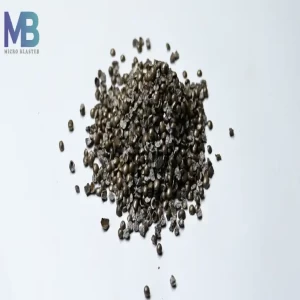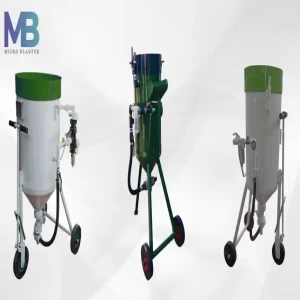Search

Top 10 Types of Abrasive Blasting

Sand Blasting
Sand blasting machine shoots dry silica abrasive particles at the outside of a section at high speed. It utilizes silica or quartz as the rough material, which is then moved onto surfaces rapidly. The sharpness of the grating and the consistency in size made it incredibly rough to use in giving uniform wrapped up. These particles, given their high velocity, will eliminate any foreign substances on the outside of the part effortlessly. Sand blasting is a particularly mainstream choice with regards to eliminating rust from metal. The system utilizes gaseous tension to fire these dry rough particles.
The grating sand material alongside the air is for the most part shot out of a hand-held nozzle. Since sand blasting is executed in a more open-space design, there are ecological guidelines that figure out where it very well may be completed. The silica utilized is unsafe to well-being and can prompt Silicosis. Subsequently, this strategy is not, at this point favored with regards to grating blasting as the rough can be breathed in or spill into the climate.
Wet Blasting
Wet blasting was intended to take care of the enormous issue with air blasting, which is controlling the measure of airborne residue that outcomes from doing air blasting. This instrument infuses water into the nozzle close to the exit of the abrasive that is moved by high air pressure. In certain assortments, water is even blended in with the abrasive ahead of time and shot out through the nozzle.
Regardless, a combination of air, water, and abrasive particles leave the nozzle and hit the surface at high strain to help clean it. The side-effect of this cleaning exercise should be contained and appropriately discarded, as indicated by natural guidelines.
Vacuum Blasting
Vacuum blasting is otherwise called dustless blasting. This includes a blasting machine that comes outfitted with a vacuum pull that eliminates any moved abrasives and surface impurities. Thus, these materials are quickly drawn once more into the control unit. The advantage of vacuum blasting is it's more successful in the reusing of spent abrasives that can end up being cost-productive. Furthermore, any trash from the cleaning is additionally limited. Be that as it may, the reusing capacity makes the vacuum blasting strategy slower than different techniques.
Centrifugal Blasting
Centrifugal blasting is otherwise called wheel blasting. This is the point at which an engine worked sharp edge wheel flings the abrasives at extraordinarily high paces towards the surface that requires cleaning. The greatest advantage to this strategy is that it doesn't utilize packed pneumatic stress making it substantially more. It's additionally known to be a more successful cleaner and produces cleaner and more uniform surfaces.
Issues with centrifugal blasting are that it is a bigger machine and is substantially less convenient. It likewise can't be worked on lopsided administrations. Abrasives utilized in centrifugal blasting can likewise be reused and garbage is gathered by an authority unit. Both settling on it an engaging decision.
Soda Blasting
Soda blasting is a more current form of blasting that utilizes sodium bicarbonate as the abrasive which is impacted onto the surface utilizing pneumatic stress. The utilization of sodium bicarbonate has been demonstrated to be extremely powerful at eliminating certain pollutants from the outside of materials. The abrasive breaks on contact with the surface and applies a force that clears up toxins on a superficial level. It's a gentler form of abrasive blasting and requires substantially less pressing factor effort. This makes them reasonable for milder surfaces, for example, chrome, plastic abrasive, or glass. A downside anyway to soda blasting is the abrasive can't be reused.
Steel Grit Blasting
Steel Grit blasting utilizations circular steels as abrasives. This strategy is regularly utilized when endeavoring to clean metal surfaces. It's successful in eliminating pain or rust on other steel surfaces. The utilization of steel grit likewise has added points of interest, for example, giving a smoother surface completion and aiding in peening which reinforces the metal. Different materials can likewise be utilized rather than steel in this strategy, for example, Aluminum, Silicon Carbide, and walnut shells. Everything relies upon what surface material is being cleaned.
Bristle Blasting
Bristle blasting is the solitary blasting that doesn't include an abrasive being projected onto a surface to clean it. In this technique, steel wire bristles are straightforwardly turned against the outside of the material to eliminate toxins. This leaves the surface smooth and uniform. It's a well-known technique with regards to cleaning metal surfaces with bunches of consumption.
Dry-Ice Blasting
Dry-ice blasting is a more current and imaginative type of abrasive blasting. It utilizes high-pressure pneumatic stress alongside carbon dioxide pellets that are projected at the surface to clean it. It's a one of a kind type of abrasive blasting as the carbon dioxide is non-poisonous and doesn't respond with the toxin on the part surface – making it ideal for substances, for example, cleaning food preparing hardware.
These carbon dioxide pellets are made by taking fluid carbon dioxide and freezing it at outrageous temperatures to frame dry ice pellets. These pellets will seem like a day off when they sway the surface at high speed, the chilly temperature of the pellet and speed of effect makes a warm stun. This stun assists with breaking any connections between the surface and the impurity – assisting with dislodging it.
The pellets at that point disintegrate as the external temperature is far more noteworthy. The advantage of such a technique is the manner by which quick and clean it is. There's no abrasive that should be reused or tidied up. Carbon dioxide pellets are non-responsive and harmless to the ecosystem. Truth be told, it doesn't really complete any scraped spot. The pellets eliminate toxins without applying any real harm to the surface it's cleaning. This makes it ideal for cleaning delicate electrical segments too.
Pencil Blasting
Pencil blasting, some of the time alluded to as miniature blasting is when high-pressure air and fine powder are combined prior to being shot out as an abrasive. These abrasive ways out through a little spout and makes a fine stream that is profoundly exact and can be utilized to clean explicit zones of a surface.
In light of the fine-sized spout, the pressing factors can likewise be changed with these machines to do much more than surface cleaning. It very well may be customized to try and cut, drill, or deburr surfaces. Some are even utilized against precious stones to change their surfaces and in applications, for example, glass scratching. The greatest bit of leeway and use for pencil blasting is when exactness is required. Best utilized for: Any abrasive blasting that requires extraordinary accuracy.
Bead Blasting
At last, bead blasting is another pneumatic stress-controlled abrasive blasting strategy that utilizes glass beads. These glass beads are viable at cleaning, deburring, and peening metal surface. The glass beads are round fit as a fiddle and when sway the surface makes a miniature dimple. In total, this radiates a substantially more uniform completion. These glass beads are 100% recyclable making it a cost-effective method.
The utilization of glass beads likewise brings about a much cleaner and splendid completion. The utilization of glass beads additionally guarantees the abrasive is non-poisonous and not unsafe to the climate. On the off chance that utilizing fine glass beads, it'll radiate a dull or silk finish against metals, for example, aluminum. Coarser beads, then again, will give a uniform however harsh completion.

